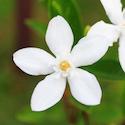Ever wondered why jasmines are everyone's favourite in the gardening world? Well, it's no secret! These lovely plants, with their beautiful white or sunny yellow blossoms, have a charm that's hard to resist.
One day you are inspecting your jasmine and suddenly notice that your plant has now red spots or the leaves are turning red. Don’t panic, in this article, we will cover all the reasons for this issue. But, why are my jasmine leaves turning red?
Because jasmine leaves contain natural compounds called anthocyanins, their colour can shift to red when jasmine plants are affected by various factors like cold temperatures, nutrient deficiencies, pH imbalances, fungal infections, and inadequate watering.
Do you want to get the most beautiful Jasmine plants ever? Freshly delivered and ready to decorate your house or your garden? Don't be shy check them out!
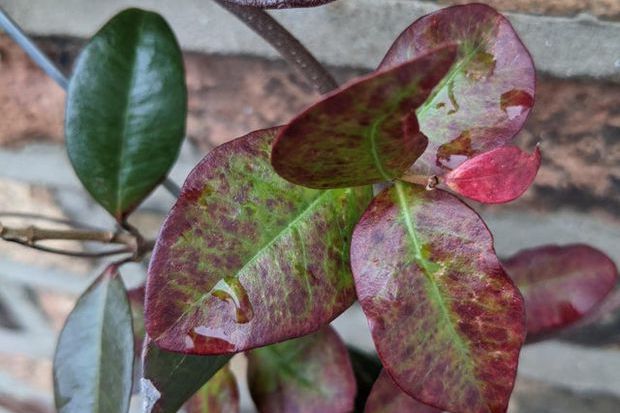
Jasmines are undeniably beautiful plants, known for their stunning white or yellow waxy blossoms. Moreover, they boast some of the most delightful natural fragrances you'll ever encounter.
Whether you choose to grow them outdoors in your garden or bring their beauty indoors, jasmine plants offer a range of benefits. Caring for them is relatively straightforward, requiring minimal attention and maintenance.
However, occasionally, our beloved plants can be affected by certain issues that can affect their growth and blooming potential.
Among others, one remarkable indicator of a jasmine's health status is a sudden or progressive change in its leaves’ colour.
As I have covered in other posts, changes in colour in our jasmine foliage can range from red, and purple to brown, yellow and white. Each of those tones indicates a different problem in our lovely jasmine plant.
Not to stress though, in this article, I will be explaining all the different reasons why your jasmine leaves are turning red and how to fix it. Keep reading below for more details information! Come along!
Why are my Jasmine Leaves Turning Red? All the reasons
When you notice your jasmine leaves turning red, it's actually because of a chemical called anthocyanins. Anthocyanins are natural compounds found in plants, and they're responsible for giving different plant parts, like leaves, fruits, and flowers, their vibrant colours.
This transformation happens when the sugars in the plant react with proteins in the cell sap. This natural process creates pigments that change the green leaves into captivating shades of red, and sometimes even purple.
Understanding these colour changes is crucial for us to take better care of our beloved jasmine plants and to treat those issues.
Here are all the reasons why jasmine leaves are turning red:
1. COLD TEMPERATURE
As spring dawns, colder temperatures can often lead to the appearance of those striking red leaves on your jasmine. In early spring, as the nights gradually grow cooler, though not reaching freezing point, they tend to settle in the range of the low 40s to 50°F (4 to 10°C). It's during these moments that your jasmine plant may show a reaction.
You see, jasmines are native to tropical or sub-tropical regions, thriving in warm and humid conditions for most of their lives. They're quite particular about their environment, and temperature stands as one of their top priorities when it comes to healthy growth.
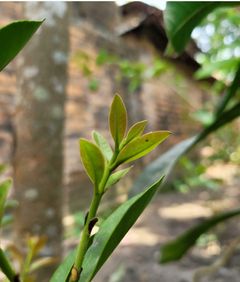
Thus, when it comes to safeguarding their leaves' shape and vibrant colour, cold temperatures are a common environmental stressor that jasmine plants encounter. In response to these chilly conditions, jasmines employ a clever survival strategy: they conserve energy.
Imagine it as the plant's version of battening down the hatches for a cold snap. In essence, they reduce their energy expenditure, recognising that photosynthesis isn't as efficient during colder weather.
But here's the good news: when the mercury begins to climb a few degrees, edging closer to the temperature range that jasmines prefer, the cold stress usually abates. Within a relatively short span, typically spanning 2 to 5 days, you'll witness those leaves regaining their lush green hue once more.
2. NUTRIENT DEFICIENCY
Sometimes, your jasmine's leaves may turn red due to factors other than temperature. Among others, a nutrient deficiency can play a key role in the reddening of your jasmine leaves.
One of the most common nutrient shortages is low phosphorus levels. Phosphorus, a vital nutrient for plant growth, usually stars in the development of roots and flowers. However, when your jasmine falls short of this essential nutrient, its leaves may slowly change colour, often leaning toward shades of red.
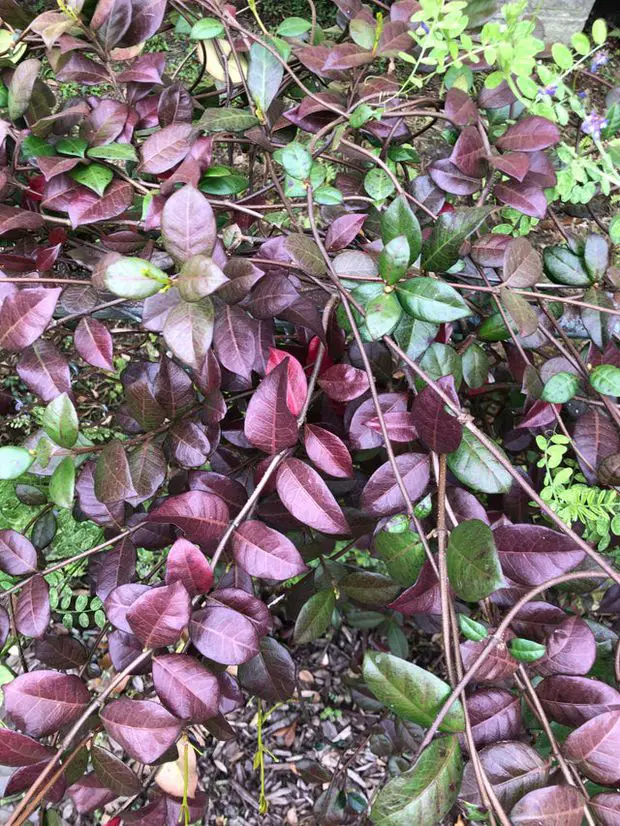
Interestingly, this response differs from what we would expect with a nitrogen deficiency, where leaf reddening isn't typically the primary sign. To address this issue, let’s consider the following helpful tip: introduce a bit of fertilisation, particularly one that's rich in phosphorus. My favourite of all times is called Miracle Gro and it is an incredible boost for your jasmine plant when it is feeling a little down.
Do this as late summer transitions into early fall, just before the arrival of winter. This proactive step sets your plants up for the upcoming colder months.
How to treat it. Solution.
Fertilisation with Phosphorus-Rich Options
- Bone Meal: This natural fertiliser is an excellent source of phosphorus, derived from finely ground animal bones. It provides a slow and steady release of phosphorus to your plants. A typical application rate of Bone meal is 1 to 2 tablespoons per square foot of soil. Be cautious not to over-apply, as excessive use can gradually increase soil pH, potentially causing nutrient imbalances and other issues in the long run. Bone meal is a great choice for gardeners looking to go organic.
- Rock Phosphate: This is a mineral-based source of phosphorus, derived from phosphate rocks. It's an environmentally friendly option for those who prefer non-animal product fertilisers. Rock Phosphate releases phosphorus slowly over time, making it an ideal choice for long-term soil enrichment. Apply it at a rate of 5-10 pounds per 100 square feet of garden space and mix it into the soil.
- Triple Superphosphate: This is a highly concentrated phosphorus fertiliser, often containing 45-50% phosphorus. Due to its potency, it should be used with caution and following package instructions. It provides a rapid boost of phosphorus to address severe deficiencies. Typically, apply 1-2 tablespoons per plant, mixing it into the soil or potting mix during planting.
Organic Amendments
- Compost: Compost is a nutrient-rich, organic matter that can improve soil structure and boost phosphorus levels naturally. Regularly incorporate compost into your garden beds by mixing it into the top few inches of soil. Aim for an application of 2-3 inches of compost per season.
- Manure: Well-rotted manure from animals like cows, horses, or chickens can be an excellent source of phosphorus. Ensure it's fully composted to prevent burning your plants. Apply a layer of 1-2 inches of composted manure around your jasmine plants and gently mix it into the soil.
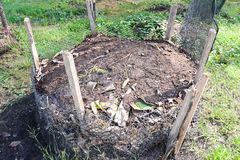
Soil pH Adjustments
- Assess Soil pH: Use a soil test kit to determine your soil's pH level. Jasmine plants prefer slightly acidic to neutral pH conditions, ideally between 6.0 to 7.0.
- Elemental Sulfur: If your soil pH is too high (alkaline), consider lowering it by adding elemental sulphur. The amount needed depends on your soil's current pH and the desired pH level. Follow package instructions for precise application rates.
- Acidic Organic Materials: Organic materials like pine needles, coffee grounds, or peat moss can help acidify the soil over time. Incorporate these materials into the top layer of soil around your jasmine plants.
Mycorrhizal Inoculants
Mycorrhizal Fungi: These beneficial fungi form symbiotic relationships with plant roots, extending their reach for phosphorus and other nutrients. Use mycorrhizal inoculants as directed on the product label when planting or transplanting your jasmine. This guys work wonders!
By applying these detailed solutions and monitoring your jasmine's response, you'll be better equipped to combat any possible phosphorus deficiency and keep your jasmine healthy and thriving.
3. POOR SOIL CONDITION. pH imbalance
Soil pH imbalances often occur, particularly during the early spring when we're rejuvenating our garden beds. This process can entail adding lime, wood ash, or introducing fresh compost, each carrying varying acidity levels.
Additionally, the soil's composition, including an excess of clay, can contribute to pH fluctuations, causing it to shift towards either the acidic or alkaline side.
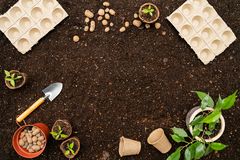
When the soil pH strays too far from the ideal range, it hinders your plant's ability to efficiently absorb vital nutrients.
Even if your garden bed contains all the necessary nutrients, your plants might struggle to uptake and utilise them effectively, creating the potential for yet another nutrient-related issue, albeit of a different nature.
How to treat it. Solution.
To prevent and monitor pH issues, you can easily purchase pH strips online, readily available from numerous lab suppliers often used for tasks like swimming pool pH testing.
Here's a simple process for checking your soil's pH: Take a small sample of your soil or bedding, mix it with some water, and stir it well. Then, dip a pH strip into the mixture and compare the resulting color to the reference chart provided in the package to determine your soil's pH. This straightforward test will help you identify whether your soil is too acidic or too alkaline.
If your soil turns out to be alkaline, there's no need to panic. You can rectify this by slightly acidifying it, achieved by adding small amounts of elemental sulfur, aluminum sulfate, or dilute sulfuric acid.
Safety Tip: When dealing with acids, particularly sulfuric acid, it's crucial to exercise caution and follow safety procedures, including wearing gardening eye protection and gardening gloves. If you're not experienced in handling acids safely, it's best not to use them to avoid potential injuries. Always dilute acids and never use them in concentrated form. If in doubt, refrain from using them entirely.
When using acids, start conservatively. Aluminum sulfate typically comes dissolved in water at a pH of 2, while a dilute solution of sulfuric acid can be used as-is or further diluted. Elemental sulfur can be directly added to the soil in small quantities.
The key is to introduce acid gradually, continually checking the soil pH to gauge progress. For a rapid pH adjustment, mix about a cup of sulfuric acid or aluminum sulfate into a gallon of water, ensuring thorough mixing. Then, apply this acidic water around your plants to swiftly lower the soil pH.
If you're uncertain about the extent of acidity adjustment needed, proceed cautiously by using a portion of the prepared water and periodically retesting the soil pH, as mentioned earlier. Our target range is between 6.5 and 7, representing a slightly acidic to neutral pH.
Alternatively, you can incorporate compost with a pH of 7 into your soil, which will help neutralize alkaline pH levels. Mix some of your soil with the new neutral soil, retest the pH, and reintroduce it to your plants if it falls within the desired range of 6.5 to 7.
A noteworthy point to remember: Bone meal is most effective under somewhat acidic conditions, so ensure your pH remains below 7 when using Bone meal to increase phosphorus levels. In such cases, aiming for a pH of 6.5 is ideal.
4. DISEASES
While several diseases can potentially affect your jasmine plants, there are two main types of microorganisms responsible for jasmine leaves turning red. One is the Root-knot nematode and the other one is fungus. But we will talk about this later in the post.
Root-knot nematode
One of the most common causes behind red leaves in our lovely jasmines is a microscopic worm known as the root-knot nematode. These tiny roundworms, measuring a mere 0.03 inches or 0.75 mm, belong to the Meloidogyne hapla and Meloidogyne incognita species.
Root-knot nematodes are parasitic soil-dwellers that thrive in humid and moist environments. Here's how they operate: The nematode larvae invade the roots of your jasmine plants, creating knot-like galls that siphon vital nutrients from your beloved plant.
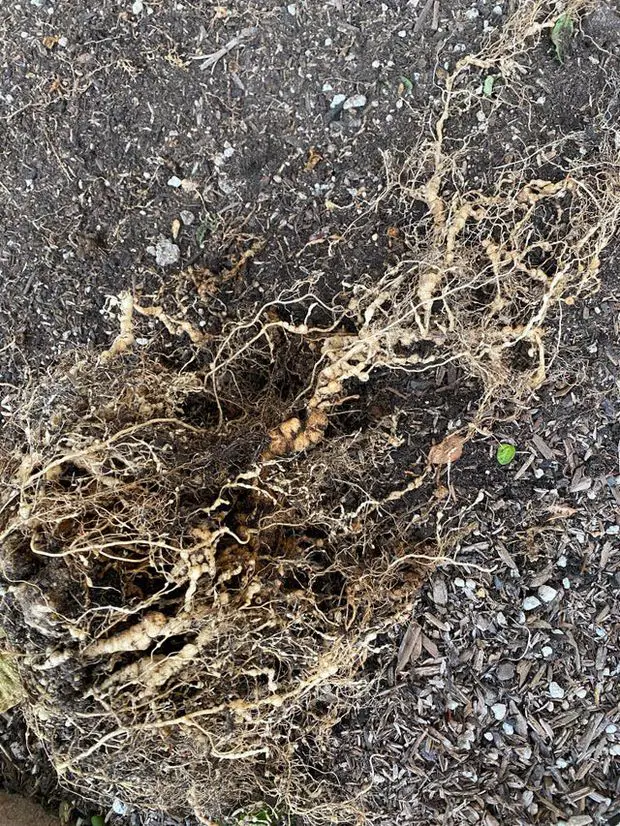
This parasitic activity not only triggers the reddening of leaves but also leads to a significant drop in flower yield when nematodes are present.
Visually, a nematode infestation is characterised by numerous root knots or galls at the jasmine plant's base. Upon removing your plant from the soil, the roots may appear as a tangled mass of knots.
This proliferation of knots obstructs the roots, leading to waterlogged conditions that hinder the plant's natural nutrient absorption processes. Once again, phosphorus becomes a primary nutrient adversely affected by this disease.
How to treat it. Solution.
The key lies in eliminating these pesky parasites, and there are two easily accessible organic nematicide products that can help reduce nematode populations.
The first product is based on geraniol, an essential oil, while the second is derived from saponins found in the soapbark tree, Quillaja saponaria.
Additionally, you can employ azadirachtin extracted from neem oil, which serves as a gentle yet highly effective remedy, particularly in the early stages of nematode infestation. Azadirachtin not only combats nematodes but also targets other parasites and mites.
For a more preventive approach, consider incorporating a small amount of neem seed meal into your jasmine plant's soil. This not only acts as a gentle fertiliser but also reinforces the soil bed.
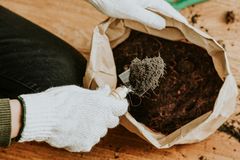
Another remarkably effective solution is the use of black walnut hulls, rich in juglone, a natural chemical known to combat nematodes. Simply add a layer of compost or crushed walnut hulls to your jasmine plant's bedding soil.
Remember, prevention is often the best cure. When it comes to root-knot nematodes, implementing good crop rotation practices is essential.
Intercropping with plants like marigolds or Sudan grass between your jasmine plants can significantly reduce nematode populations. Marigolds release nematode-repelling compounds from their roots, making them an excellent choice for nematode management.
Here are some key points to remember for preventing this disease:
- Clean the roots of old plants thoroughly.
- Regularly till the soil to disrupt nematode habitat.
- Enhance your soil with organic materials to promote overall soil health and resilience against nematode infestations.
5. INFECTIONS
Fungal infections are the second most common culprits behind the appearance of red leaves on our beloved jasmine plants. Three notable fungal species that can cause these issues are Pythium, Rhizoctonia and Powdery Mildew. Fusarium, and Sclerotinia, other fungal species like Cercospora and Botrytis can also contribute to this issue.
Pythium and Rhizoctonia
Pythium fungal species primarily target the roots of jasmine plants, while Rhizoctonia can affect various parts of the plant. Both these fungi thrive in environments characterised by excessive moisture.
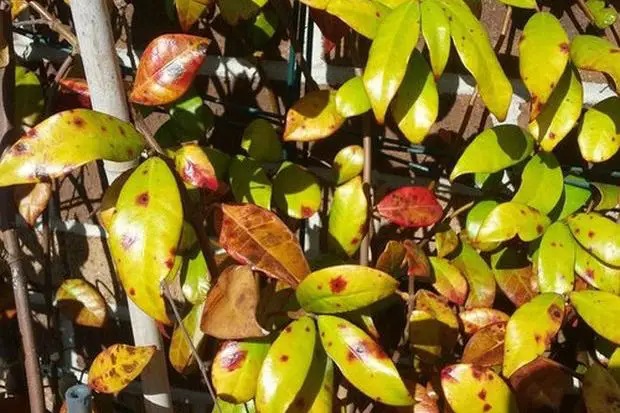
As mentioned earlier, factors like poor soil drainage, limited air circulation, and overwatering can create the perfect breeding ground for these fungal diseases. Infected roots typically become soft and darkened, leading to the development of new shoots that appear distorted, brown, and red.
How to treat it. Solution
- Fertilization: Avoid over-watering and excessive fertilization. Opt for protective fungicides high in sulfur or potassium bicarbonate.
- Enhance Soil Drainage: Begin by replacing waterlogged soil with fresh soil. This allows the roots to gradually dry out, creating an environment inhospitable to fungal growth.
- Pruning: Halt the spread of fungal infections by pruning affected areas, including the removal of red leaves. Pruning stimulates healthy foliage growth and reduces the risk of further infection.
- Apply Fungicides: If the disease is widespread, consider using a fungicide containing myclobutanil or organic alternatives like neem oil, jojoba oil, or horticultural oil for effective treatment. Additional fungicides like Copper-Based Fungicides, Azoxystrobin, and Propiconazole are also highly effective against Powdery Mildew and Rhizoctonia.
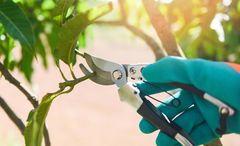
How to Apply Fungicides
Foliar Spray involves mixing the fungicide as per the manufacturer's instructions and evenly applying it to affected leaves, ensuring both upper and lower surfaces are covered.
For systemic control, Ortho Max is highly effective. Mix the fungicide with water and pour it around the plant's base, allowing it to be absorbed through the roots. This method is particularly useful for root-related fungal issues like Pythium.
Alternatively, certain fungicides come in powdered form and can be applied through Dusting. Use a dust applicator or a soft brush to evenly disperse the powder on affected plant parts, such as leaves and stems.
Systemic fungicides, which are absorbed by the plant, offer long-lasting protection. They are typically applied as soil drenches or injections around the plant. Ensure you follow the recommended application schedule provided on the fungicide label, especially during periods of high humidity or moisture. You can control this by regularly using a moisture sensor.
Lastly, prioritize safety precautions: Always wear protective gear, including gloves, goggles, and a mask, when handling fungicides. Adhere to safety recommendations provided on the product label to minimize exposure to these chemicals and ensure a safe application process.
By diligently implementing these solutions, you can help your jasmine plants recover, fostering vibrant foliage and preventing the recurrence of red leaves caused by various fungal infections.
6. WATER STRESS
While a jasmine plant doesn’t need loads of water, it has specific soil preferences for optimal growth. It thrives in a balanced environment, which means soil that's both nutrient-rich and well-draining. Maintaining the right moisture level is pivotal to the health and appearance of your jasmine, and it's the key to preventing issues like red leaves.
Jasmine's ideal growing conditions necessitate soil that retains just the right amount of moisture. When the soil becomes excessively dry, it can trigger various complications, with one of the most noticeable symptoms being the emergence of red leaves.
If you are ever in a situation where there are heavy rains going on frequently, ensure you use a jasmine heavy rain protection. Otherwise they might get swamped and fungus will grow like crazy!
We've all encountered situations where our plants suffer due to insufficient watering. Whether we've been away for an extended period without adequate preparation or a well-meaning friend overlooked our garden while we were travelling, the result is often the same: the soil dries out swiftly, and the leaves begin to wither and adopt a reddish hue.
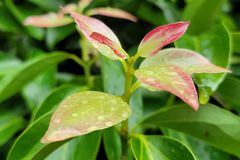
How to treat it. Solution.
To avoid this scenario, proactive measures are essential. You can start by personally checking the soil's moisture level. This can be done quite effectively by inserting your finger into the soil to a depth of about an inch or two. If the soil feels adequately moist, your jasmine is likely receiving sufficient hydration. However, if the soil feels dry at this depth, it's time to provide some watering.
Alternatively, you can invest in a humidity probe, readily available for purchase online. This handy tool offers precise readings of the soil's moisture content, enabling you to monitor and adjust your watering routine with accuracy.
While maintaining the right moisture level is crucial, achieving a balance is equally vital. Jasmine plants are averse to soil that's overly compact or waterlogged, as these conditions can lead to root rot.
To prevent this, it's imperative that your soil has proper drainage. You can achieve this by opting for well-draining soil mixes or amending your garden soil with materials like perlite or coarse sand.
In addition to moisture control, it's important to ensure your soil is enriched with organic matter. This not only enhances nutrient availability but also contributes to moisture retention.
By proactively managing soil moisture and striking the right balance between dryness and saturation, you'll create an environment in which your jasmine plants can thrive. As a result, you'll enjoy vibrant and healthy foliage, devoid of the troublesome issue of red leaves.
7. PESTS
When dealing with the perplexing problem of red leaves on your cherished jasmine plant, pests can at times be the elusive culprits.
These troublemakers often include tiny arachnids known as spider mites and minuscule insects called aphids. These stealthy intruders have a penchant for sipping on the plant's sap, which disrupts its normal physiological processes and induces stress.
The outcome? Those telltale red leaves that signal your jasmine's distress.
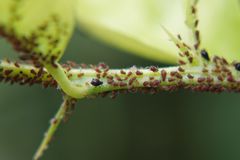
How to treat it. Solution.
To combat this pest-induced redness effectively, a two-step approach is your best bet. Firstly, opt for an insecticidal soap or Neem oil solution to gently treat the affected areas, making sure to thoroughly cover both the upper and lower leaf surfaces.
Next is using my go to for those nasty aphids, it is called Miracle Killer. This is for a reason! it is super effective in getting rid of pests.
Regularly inspect your jasmine plants to catch any infestations at their earliest stages, allowing for swift intervention. It's also crucial to maintain a tidy garden, free from weeds that can serve as havens for these troublesome pests.
For an extra dose of natural pest control, consider introducing beneficial insects like ladybugs, which can help keep pest populations in check, ultimately safeguarding the lush green vibrancy of your jasmine's leaves.
8. SUN EXPOSURE
Excessive sun exposure can also be a contributing factor to the issue of red leaves in your jasmine plant. When jasmine receives an abundance of direct sunlight, especially during the scorching midday hours, it can experience sunburn.
I definetely recommend you use a basic jasmine sun protection to avoid your lovelies to get burnt!
This causes the leaves to turn red or brown as a protective response to shield themselves from the intense sunlight.
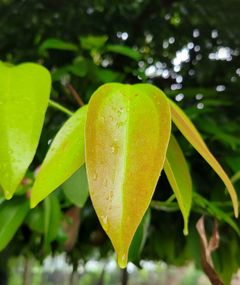
How to treat it. Solution.
To counteract this, consider relocating your jasmine plant to a spot where it receives dappled sunlight or partial shade during the hottest parts of the day. If transplanting is not feasible, you can provide temporary shade using garden umbrellas or shade cloth. This will help protect your jasmine from the harsh sun and maintain the lush green appearance of its leaves.
Additionally, ensure that your plant is adequately hydrated during sunny spells to mitigate the effects of sunburn. Regularly monitor your jasmine to promptly address any signs of sunburn, allowing it to recover and thrive under more favourable lighting conditions.
Final thoughts
In a nutshell, there are a few common reasons why jasmine might turn its leaves red. First, chilly temperatures can cause your jasmine leaves to change to a reddish hue, especially in early spring.
Jasmine prefers warmth, and colder nights can lead to this colour change. Fortunately, as the temperature warms up, your leaves will likely revert to their lush green colour.
Nutrient deficiencies are another culprit. Low phosphorus levels, in particular, can make your jasmine leaves turn red. To tackle this, consider adding a phosphorus-rich fertiliser as summer turns into fall to prep your plants for winter.
Soil pH imbalances can also affect leaf colour. Testing your soil's pH and adjusting it as needed can help your jasmine plants absorb nutrients efficiently.
Fungal infections, like Pythium, Rhizoctonia, and Powdery Mildew, can turn your leaves red too. Improve soil drainage, prune affected areas, and apply appropriate fungicides to combat these issues.
Lastly, don't forget about watering. While jasmine isn't a water hog, it does appreciate well-draining, nutrient-rich soil. Maintaining the right moisture balance can prevent red leaves from making an appearance!
